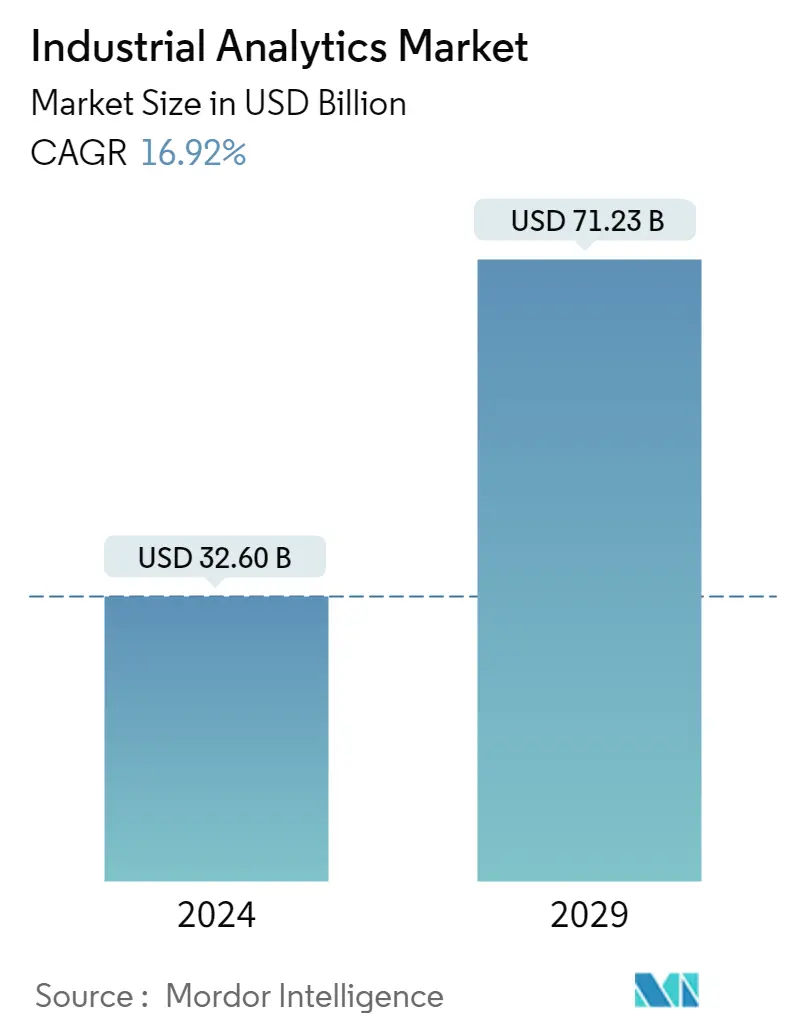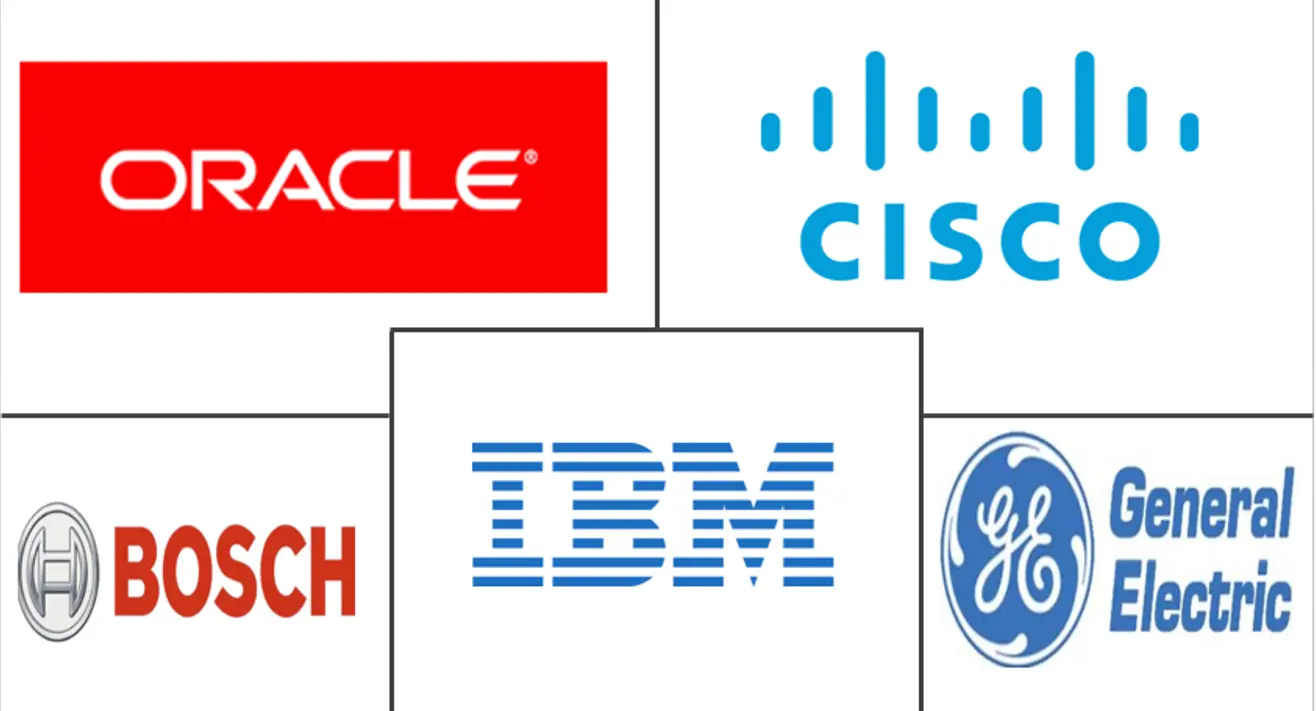Market Size of Industrial Analytics Industry

| Study Period | 2019 - 2029 |
| Market Size (2024) | USD 32.60 Billion |
| Market Size (2029) | USD 71.23 Billion |
| CAGR (2024 - 2029) | 16.92 % |
| Fastest Growing Market | Asia Pacific |
| Largest Market | North America |
Major Players
*Disclaimer: Major Players sorted in no particular order |
Need a report that reflects how COVID-19 has impacted this market and its growth?
Industrial Analytics Market Analysis
The Industrial Analytics Market size is estimated at USD 32.60 billion in 2024, and is expected to reach USD 71.23 billion by 2029, growing at a CAGR of 16.92% during the forecast period (2024-2029).
The rising Industry 4.0 will drive the market in the forecast period. An increasing number of IoT and IIoT installations are the primary enablers of industrial analytics in the global market. The growing data available from multiple sources across the production line, such as sensors, machine vision systems, PLCs, etc., are moving industries from data metrics models to data analytics models.
- Industrial analytics includes collecting, analyzing, and using data generated in industrial operations. It covers a wide range of data captured from devices and sources, whether an asset or a production process. Anything with the sensor creates data, and industrial analytics examines all this data.
- Industrial analytics differs from Big Data analytics systems in that they are designed to meet the exacting standards of the industry in which they work. It includes processing vast quantities of time series data from numerous sources and turning it into actionable insights. Industrial analytics is relevant to any company that manufactures and sells physical products.
- The typical and traditional approach to industrial analytics involves data scientists building an analytics model. Data scientists must understand the use case scenario and then gather, transform, optimize, and load the data in the developed data model, which needs to be validated, optimized, and trained. The completed data model delivers answers to the initial questions.
- However, this approach leaves organizations dependent on their data scientists and results in a solution that subject matter experts (SMEs) (engineers and operators) might need to fully understand. Moreover, the market witnessed a growing trend toward self-service applications in the past few years. This next generation of software uses advanced search algorithms, machine learning (ML), and pattern recognition technologies to make querying industrial data as easy as using Google.
- An industrial analytics solution focuses on self-service, resulting in benefits to day-to-day plant operation. It includes enhanced root cause analysis, accurate performance prediction, automated monitoring, and knowledge retention. By sharing analytics insights with users, they can take immediate action when a trend appears and directly contribute to improving overall plant performance at all production levels.
- The COVID-19 outbreak forced companies worldwide to adjust their strategies to survive in the 'new normal.' Customers have changed their priorities, too. Many are shopping online or have found that the stores they frequented in person not so long ago only provide deliveries. Businesses witnessed surges in demand for some products, while entire industries virtually ceased operations due to COVID-19 shutdowns impacting the market adversely.
